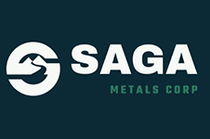The Conversation (2)
VIDEO - Mike Alkin: The US Energy Security Situation is Perilous
Jan. 23, 2018 04:35PM PST
Energy InvestingMike Alkin of the Stock Catalyst Report talks about uranium demand, supply cuts and the Trump administration’s support of nuclear power.
The Stock Catalyst Report’s Mike Alkin caught up with the Investing News Network at the Vancouver Resource Investment Conference to offer his insights on the uranium market.
Alkin expects late 2017 production cuts announced by Cameco (TSX:CCO,NYSE:CCJ) and state-owned Kazatomprom to have a “dramatic” impact on the market. According to Alkin, the market is already in deficit and is filled with secondary supply, “so this just exacerbates that downward pressure on supply.”
In terms of demand, Alkin said there are 440 reactors operating around the world, with 16 new reactors expected to come online this year. “Nuclear power is a growth industry, and I don’t think a lot of people realize that. It’s a 3-percent grower, it’s base load, it’s clean. So the demand story for nuclear is pretty good, pretty solid.”
Alkin described the Trump administration as being “very friendly” towards nuclear power, pointing out that US Secretary of Energy Rick Perry signed a secretarial determination earlier in the year “to reduce the amount of secondary supply sold into the market.”
He also mentioned that recently Energy Fuels (TSX:EFR,NYSEAMERICAN:UUUU) and Ur-Energy (TSX:URE,NYSEAMERICAN:URG) jointly filed a Section 232 petition with the US Department of Commerce regarding the amount of uranium imports coming into the market.
“They want something done about that. The US consumes 50 million pounds a year of uranium. It only produces 2.9 million pounds. So we import 95 percent, 40 percent comes from Russia and Kazakhstan and Uzbekistan. The US is in a perilous energy security situation,” Alkin said.
It remains difficult to predict when the uranium market will take off, but Alkin said utilities have 30 percent of their demand uncovered by 2020. “It takes them two years to order. We’re in 2018 now. I think this year the rubber has to hit the road for them,” he concluded.
Watch the video above to hear more from Mike Alkin and the transcript for this interview can be found below.
INN: So we saw Cameco (TSX:CCO,NYSE:CCJ) announce a suspension of production at the McArthur River and that’s starting in 2018. And also Kazakhstan has announced another production cut. And so what kind of effects will this have on the market? What can people look for?
MA: Sure. It should have a great effect because McArthur River is the largest producing mine in the world. The Kazakhs are the largest producer in the world and they’ve announced a 20 percent production cut over three years. So it should have a dramatic impact. Primary mine supply is already, it’s already in a deficit. The market is filled by secondary supply. So this just exacerbates that down, that power pressure on supply.
INN: And the other thing that we’ve seen happen, too, is in Japan, TEPCO (TYO:9501) has gotten permission for a reactor restart. So can you talk a little bit about that? You know, maybe there’s some sentiment changing towards nuclear.
MA: Yeah, there is. For years–and the bull market uranium has been delayed cause people were expecting it to come online post-Fukushima a year later, two years later. But there’s been a lot of local level pressure from local citizens, the local governors, who didn’t want it to come back online. But the Abe government, the national government, does support it. And so he was just re-elected and there–you’re starting to see some momentum turn there.
INN: And can we talk a little bit about demand, as well, in terms of reactor builds and what we’re seeing around the world in terms of nuclear power demand?
MA: Sure. So last year was the biggest record on year in 25 years for nuclear power being connected to the grid. This coming year are 16 reactors that are coming online. Which is significant. There are about 440 operating around the world. Nuclear power is a growth industry and I don’t think people recognize that. It’s a 3 percent grower and it’s needed, it’s base-load, it’s clean. So the demand story for nuclear is pretty good, pretty solid.
INN: And what can we say in terms of the Trump Administration, too, and in terms of the climate in the US regarding nuclear power?
MA: Sure. Very friendly so far. They’ve shown that. Secretary Perry had signed a Secretarial Determination earlier in the year to reduce the amount of secondary supplies sold into the market. And just recently, just this week, Energy Fuels (TSX:EFR,NYSEAMERICAN:UUUU) and UR-Energy (TSX:URE,NYSEAMERICAN:URG) filed a petition with the government to take a look at the amount of imports of uranium that are coming into the market and they want something done about that. You know, the US consumes 50 million pounds a year of uranium. It only produces 2.9 million pounds. So we import 95 percent. 40 percent of that comes from Russia and Kazakhstan and Pakistan. So we are in a perilous–the US is in a perilous energy security situation. So I think the Trump Administration will prove to be friendly towards uranium.
INN: And when can we expect it to take off? There’s been a lot of speculation. Last year, now into this year.
MA: Yup. You know, it’s hard because so much good has happened in the last six months. You know, we talked about Cameco, we talk cutting production, the Kazakhs cut production. ConverDyn, which is a conversion facility, shut their plants, took that off online. Abe, as you talked about. All of this thing just takes a little bit of time to work into the market. And when the utilities who have 30 percent of their demand uncovered by 2020, it takes them two years ahead of time to order. So we’re pushing up against–we’re in 2018 now. So sooner or later–and I think this year the rubber has to hit the road for them.
INN: And so I did–I was attending your presentation and I noticed that you mentioned there are two factors of trouble ahead and you talked about the auto industry. Maybe you can just go into that a bit.
MA: Sure. The auto industry has done very well for the last several years. Post- the financial crisis, there was stimulation to get car sales going. In the US, you saw the number of cars go from 9 million sold annually to 18 million. Right under 18 million sold. But what happened with that was, after the financial crisis, you saw a shortage of used cars and it caused used car pricing to go up. And as used car pricing goes up, that drives the residual value higher. So that makes cars more affordable. One of the affordability factors is leasing. So there are a tremendous amount of cars the last few years that have been leased. And now those are expiring and coming off lease. And that’s starting to put pressure on used cars. And used cars are a big, a key barometer for what new cars are going to do. So as used car pricing falls down, it should start to simulate new cars, but you’re not seeing that. The decline is starting to show. The other thing that’s troubling for me with the auto sector is 20 percent of loans originated for automobiles are from the sub-prime sector. Those with credit scores below 620. That’s a big number. $1.2 trillion goes to automotive debt. And over $200 billion of that is to the sub-prime. The troubling part of that is the default rates on those loans are approaching 10 percent. And that’s the same level they were at the global financial crisis. So I think as you see residual values starting to fall, leasing becomes more expensive. You have a lot of cars coming off lease, pressuring the market. I just think it’s a tough time to be a car-maker right now.
INN: So do you see auto-sales slowing down in the US, then, because of these?
MA: Yeah. 2018 I think you’ll probably see auto-sales–they dipped about one and a half, 2 percent in 2017. I think you’ll see the same decline in 2018. And I think–you see reverberation is my guess throughout the supply chain from the auto-part manufacturers to the car retailers, auto-finance companies. The auto-finance companies own 70 percent of the market share of that sub-prime. And that’s a big number. That’s 200 billion dollars.
INN: And so one of the metals that really depends on the auto-industry for most of it’s success is palladium. And we saw that take off in 2017. The US is a huge car market. Do you think that that could have any impact?
MA: You know, I don’t have a view on palladium currently for that.
INN: Oh okay. No worries. I’m pretty much out of questions. Is there anything else you wanted to touch on?
MA: No, I think we’ve talked about a lot of it. From a uranium perspective, I just think–and people have been patient for a long time. But they’ve been patient without a lot of hope. They’ve just focused on Japanese reactors. Now you’ve had dominoes starting to fall. And the utilities are gonna need to come into market soon. So I think we’re at an inflection point.
Don’t forget to follow us @INN_Resource for real-time news updates!
Securities Disclosure: I, Melissa Shaw, hold no direct investment interest in any company mentioned in this article.
Editorial Disclosure: The Investing News Network does not guarantee the accuracy or thoroughness of the information reported in the interviews it conducts. The opinions expressed in these interviews do not reflect the opinions of the Investing News Network and do not constitute investment advice. All readers are encouraged to perform their own due diligence.
Energy Fuels is a client of the Investing News Network. This article is not paid-for content.





